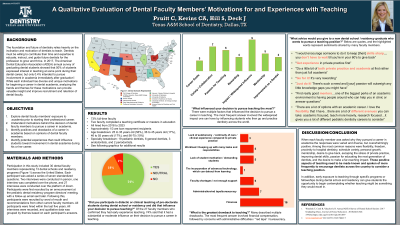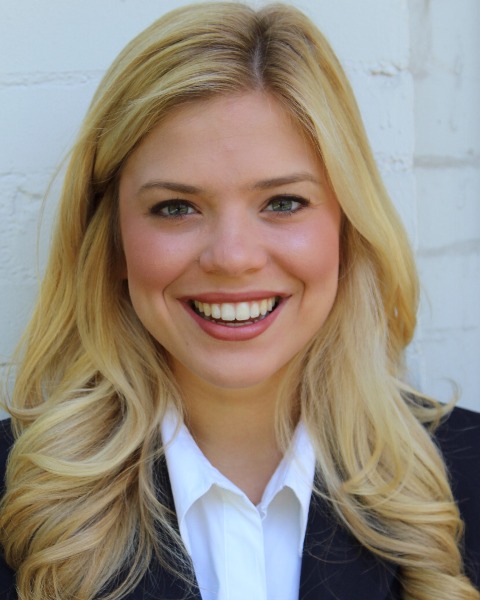Other
199 - Evaluating Dental Faculty Members’ Motivations for and Experiences withTeaching


Chandler Pruitt, DDS (she/her/hers)
Pediatric Dental Resident
Texas A & M University -—Baylor College of Dentistry, Dallas, TX
Texas A&M School of Dentistry
Dallas, Texas, United States- CK
Carolyn Kerins, DDS
Texas A&M College of Dentistry
- JD
Jennifer Deck, DDS
Texas A&M College of Dentistry
Dallas, Texas, United States - CK
Carolyn Kerins, DDS, PhD
Associate Professor & Grad Program Director
Texas A&M University School of Dentistry
Dallas, Texas, United States
Presenting Author(s)
Co-Author(s)
Research Mentor(s)
Program Director(s)
Evaluating Dental Faculty Members’ Motivations for and Experiences with Teaching
Pruitt C, Deck J, Hill S (Texas A&M University College of Dentistry, Dallas, TX)
Purpose: To explore dental faculty members’ exposure to academia prior to beginning their professional career and to understand the motivations behind why dental faculty members decide to pursue a career in academia.
Methods: An email describing the study was sent to pediatric dental residency program directors. Directors shared the email with new faculty members within their department or school who met the inclusion criteria (full-time or part-time faculty with start dates within the last five years). Focus groups and one-on-one interviews were conducted via Zoom with a standardized question set.
Results: All faculty were hired from 2018 to 2023, and 73% are full-time. Approximately 1/3 of faculty are loan repayment recipients. The majority (56%) of faculty are 25-35 years old. Of the 27 faculty members who confirmed they had early experience teaching, 74% said that it had a
substantial or moderate influence on their decision to pursue a career in
teaching. The most frequent answer concerning what influenced their decision to pursue teaching the most involved the widespread
impact one can have by influencing students who then go and practice
dentistry across the world. With regard to the greatest drawback to teaching, the most frequent answer involved financial compensation,
followed by concerns with administrative difficulties / “red tape” / bureaucracy.
Conclusions: When each faculty member was asked why they pursued a career in
academia the responses were varied and diverse, but overwhelmingly
positive. Among the most common reasons were flexibility, freedom,
proximity to hospital dentistry, schedule variety, personal growth,
mentorship, desire to give back, escaping the stress of private practice,
improving dental skills, passion for educating the next generation of
dentists, and the desire to make a far-reaching impact. These positive
aspects of teaching need to be made known and spoken of more
frequently to encourage dentists across the country to consider a
teaching position.
In addition, early exposure to teaching through specific programs or
fellowships during dental school and residency can give students the
opportunity to begin contemplating whether teaching might be something
they would excel in.
Identify Supporting Agency and Grant Number:

.jpg)